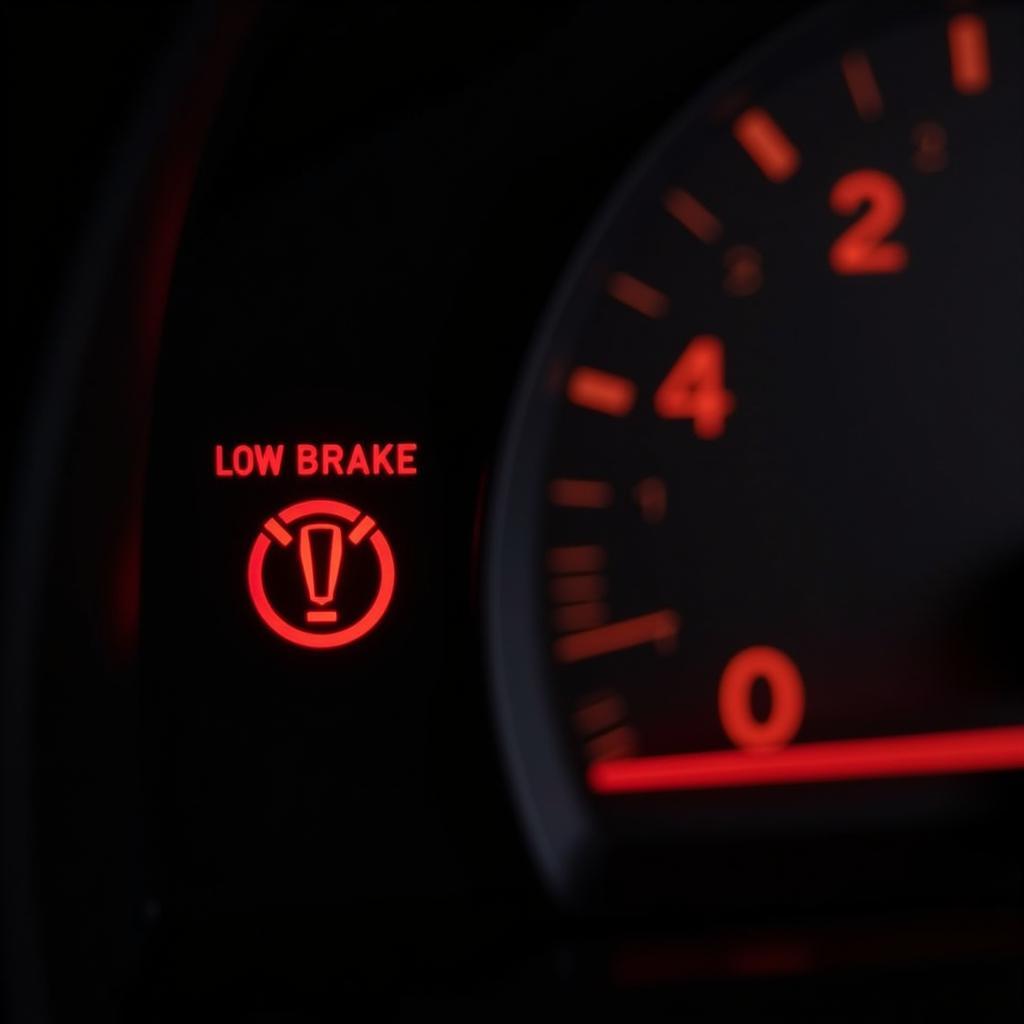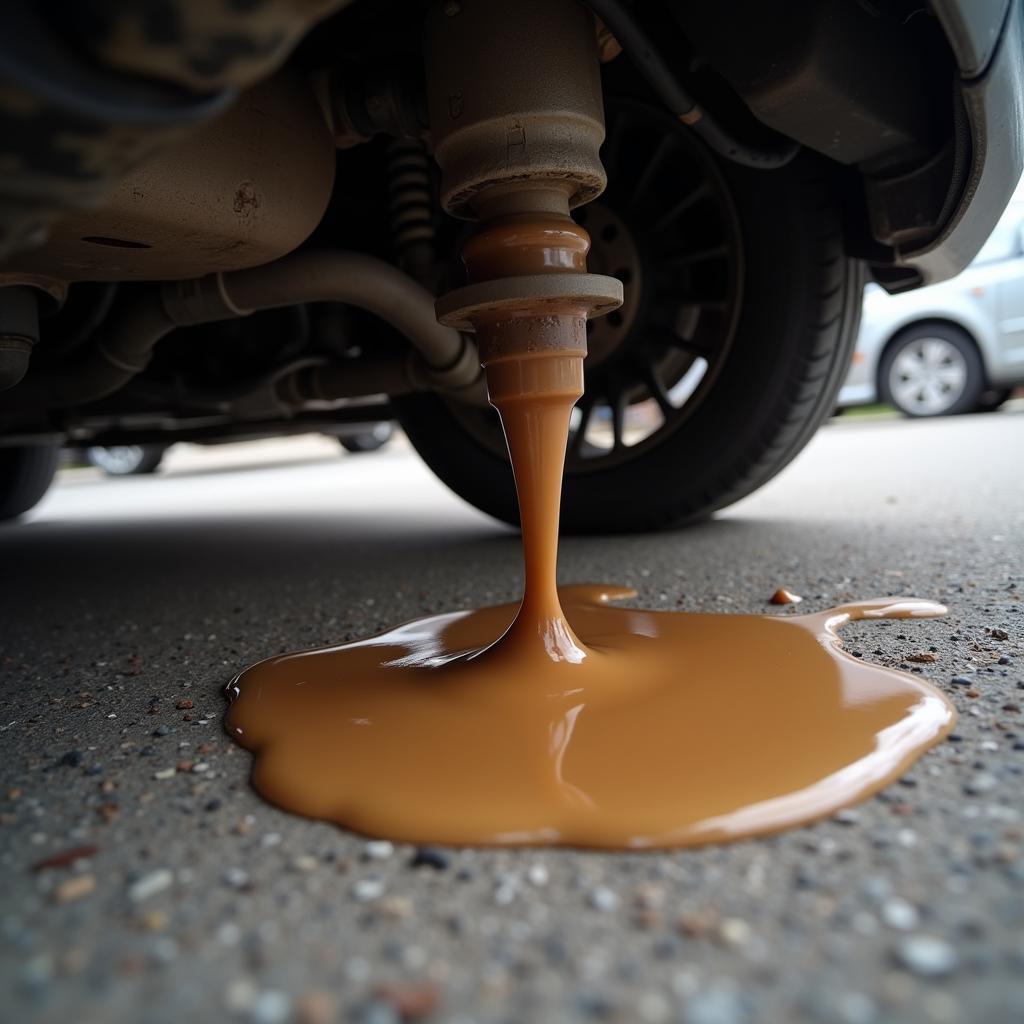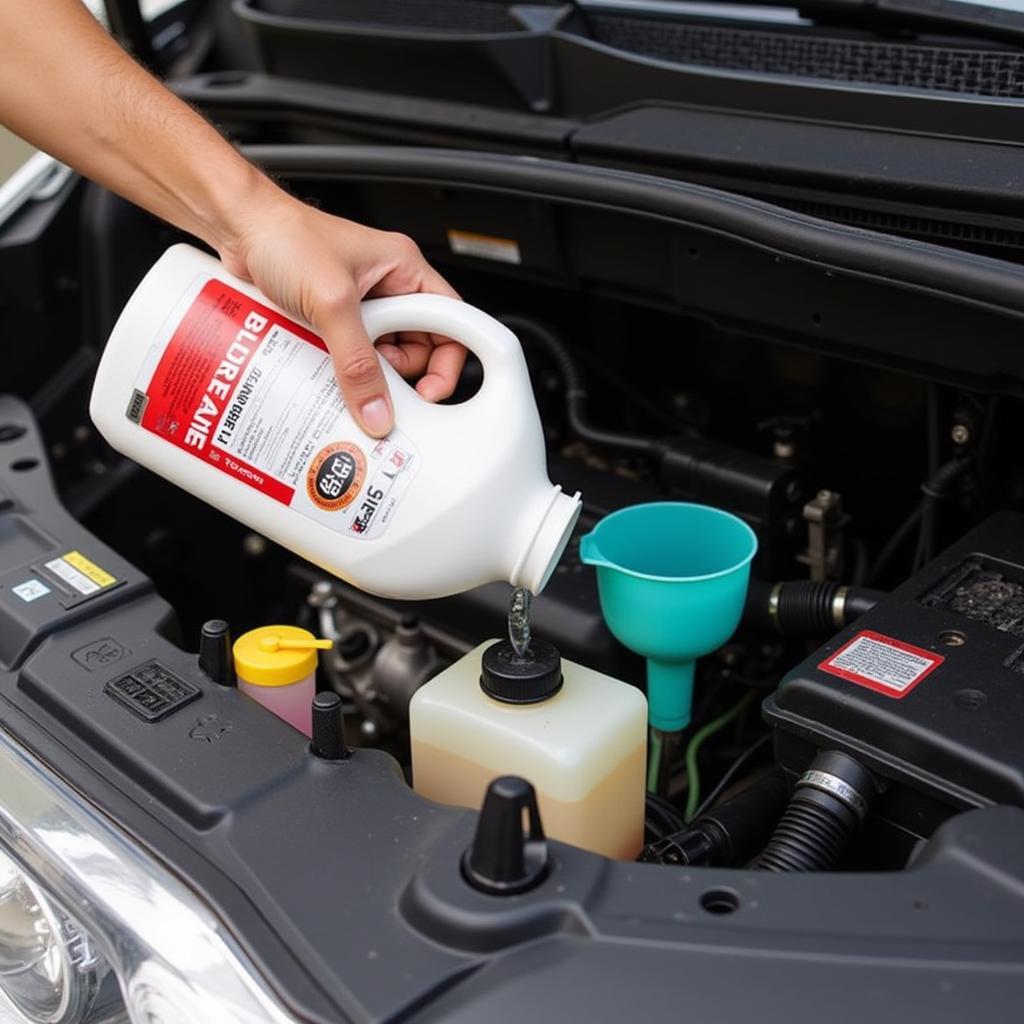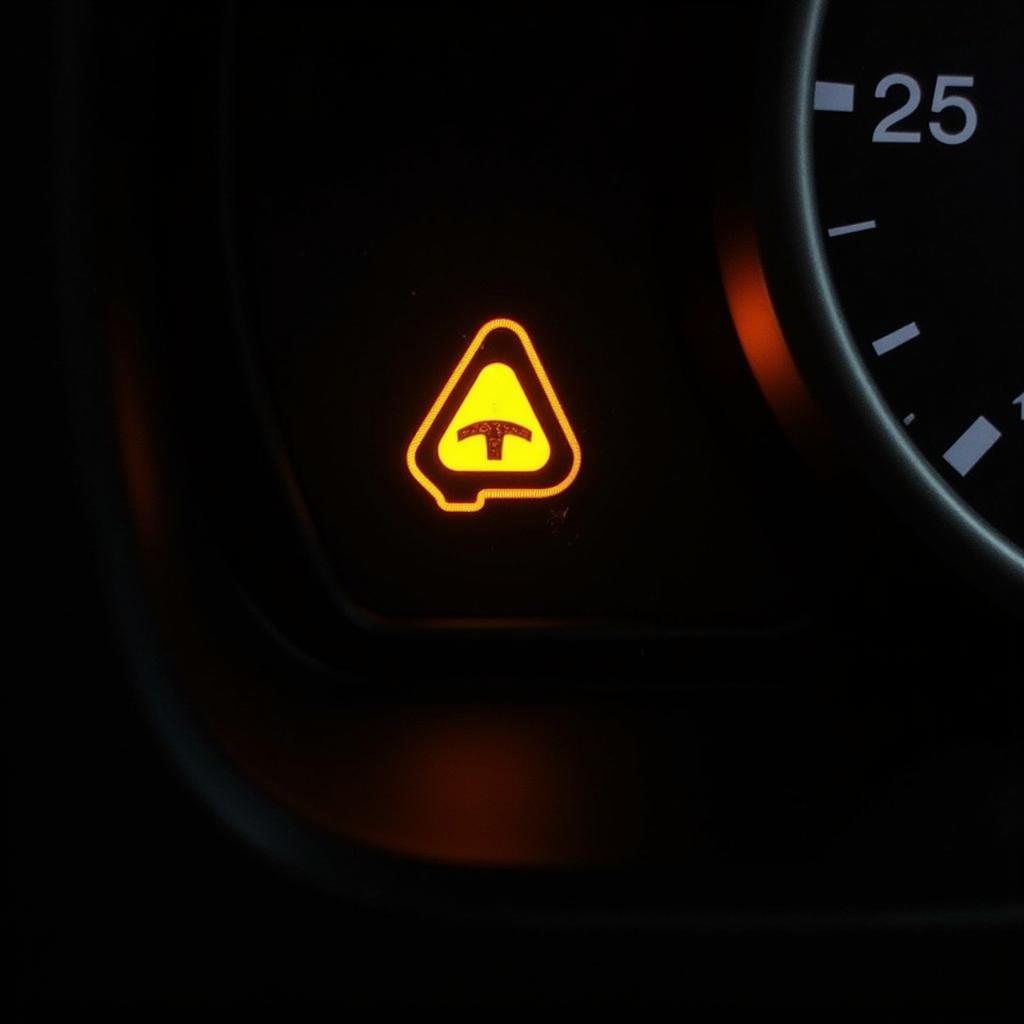The low brake fluid warning light, often depicted as a circle with parentheses and an exclamation mark in the middle, is a crucial safety indicator in your Toyota. When illuminated, it signals a potential issue with your vehicle’s braking system that requires immediate attention. Ignoring this warning could lead to decreased braking performance and increase the risk of accidents. This article will guide you through the common causes of a low brake fluid warning in Toyota vehicles and provide potential solutions to get you back on the road safely.
Understanding Your Toyota’s Braking System
Before diving into the causes of the warning light, it’s helpful to understand the basics of your Toyota’s braking system. This system is hydraulic, meaning it uses brake fluid to transmit force when you press the brake pedal. This force is then used to activate the brake calipers, squeezing the brake pads against the rotors to slow down or stop the vehicle.
 Toyota Low Brake Fluid Warning Light
Toyota Low Brake Fluid Warning Light
Common Causes of a Low Brake Fluid Warning in Toyotas
1. Worn Brake Pads: One of the most frequent causes of a low brake fluid warning is worn brake pads. As the brake pads wear down over time, the brake calipers need to extend further to engage the rotors. This extension requires more brake fluid, leading to a drop in the fluid level in the reservoir.
2. Brake Fluid Leak: A leak in the brake lines, hoses, calipers, or wheel cylinders can cause a significant loss of brake fluid. If you notice a puddle of fluid under your car, especially one that feels oily and smells like fish oil, it’s crucial to have your vehicle inspected for leaks immediately.
 Brake Fluid Leaking Under a Car
Brake Fluid Leaking Under a Car
3. Faulty Brake Master Cylinder: The brake master cylinder is responsible for pressurizing and distributing brake fluid throughout the system. If the master cylinder seals are worn or damaged, they can allow brake fluid to leak internally or externally, triggering the low fluid warning.
4. Issues with ABS System: While less common, problems with the Anti-lock Braking System (ABS) can also contribute to a low brake fluid warning. The ABS system uses brake fluid to modulate pressure during hard braking or slippery conditions. A malfunctioning ABS module or pump can lead to fluid loss and trigger the warning light.
What to Do When the Low Brake Fluid Warning Light Turns On
1. Stop Driving Immediately: If your low brake fluid warning light illuminates while driving, pull over to a safe location as soon as possible and turn off the engine. Continuing to drive with low brake fluid can be extremely dangerous and may result in brake failure.
2. Check the Brake Fluid Level: Locate the brake fluid reservoir under the hood of your Toyota (refer to your owner’s manual for the exact location). Carefully open the reservoir cap and visually inspect the fluid level. The reservoir typically has minimum and maximum level markings.
3. Add Brake Fluid (If Necessary): If the brake fluid level is below the minimum mark, you can temporarily add DOT 3 or DOT 4 brake fluid (check your owner’s manual for the recommended type). Use a clean funnel and avoid overfilling. Adding brake fluid is a temporary solution, and it’s crucial to have your vehicle inspected by a qualified mechanic as soon as possible.
 Adding Brake Fluid to Reservoir
Adding Brake Fluid to Reservoir
4. Seek Professional Help: Regardless of the brake fluid level, if the warning light is on, it’s vital to have your Toyota inspected by a qualified mechanic immediately. They can diagnose the underlying cause of the low fluid level and perform the necessary repairs.
What Not to Do When You See the Warning Light
- Don’t Ignore It: Ignoring the low brake fluid warning light can lead to severe consequences, including brake failure and accidents.
- Don’t Keep Driving: Driving with low brake fluid puts you and others on the road at risk.
- Don’t Attempt DIY Repairs If You’re Not Qualified: Brake systems are complex and require specialized knowledge and tools to repair safely.
Toyota Brake Fluid Warning: Preventive Measures
“Regular maintenance is key to preventing brake fluid issues,” says John Smith, a certified Toyota mechanic with over 20 years of experience. “Having your brake system inspected regularly, along with your scheduled maintenance, can identify potential problems before they become major headaches.”
To proactively prevent a low brake fluid warning, consider these tips:
- Adhere to Your Toyota’s Maintenance Schedule: Follow the recommended maintenance schedule outlined in your owner’s manual. This schedule typically includes brake inspections and fluid flushes at regular intervals.
- Inspect Your Brakes Regularly: Even between scheduled maintenance, visually inspect your brakes for signs of wear and tear, such as worn brake pads, leaks, or damaged brake lines.
- Address Brake Issues Promptly: If you notice any signs of brake problems, such as squealing, grinding, or a soft brake pedal, have your vehicle inspected by a mechanic immediately.
Conclusion
A low brake fluid warning in your Toyota is a serious matter that demands immediate attention. Understanding the potential causes and taking appropriate action can help ensure your safety on the road. Remember, regular maintenance and prompt attention to any brake issues are crucial for optimal braking performance and peace of mind. By addressing this warning light promptly and seeking professional assistance when necessary, you can keep your Toyota’s braking system in top condition and minimize the risk of accidents.
FAQs about Toyota Low Brake Fluid Warning
1. What does it mean when my Toyota’s brake warning light is on?
When the brake warning light illuminates, it typically indicates one of two things: low brake fluid level or a problem with your braking system.
2. Is it safe to drive with the brake warning light on?
No, it is not safe to drive with the brake warning light on. Continuing to drive could lead to brake failure and increase the risk of accidents.
3. How often should I check my Toyota’s brake fluid?
It’s a good practice to visually inspect your brake fluid level at least once a month and have it checked by a mechanic during your regular maintenance visits.
4. Can I add brake fluid myself?
While you can temporarily add brake fluid to get to a mechanic, it’s strongly recommended to have a professional diagnose and repair the underlying cause of the low fluid level.
5. How much does it cost to fix a low brake fluid problem in a Toyota?
The repair cost can vary significantly depending on the underlying cause, ranging from a simple brake pad replacement to more complex repairs like fixing a brake line leak or replacing the brake master cylinder.
6. Can worn brake pads cause the brake warning light to come on?
Yes, worn brake pads can indirectly cause the brake warning light to come on. As the brake pads wear down, the calipers need to extend further, requiring more brake fluid and potentially leading to a low fluid level warning.
7. How long can you drive with a brake fluid leak?
You should never drive with a brake fluid leak. Even a small leak can quickly worsen and lead to brake failure. If you suspect a leak, have your Toyota towed to a mechanic immediately.

